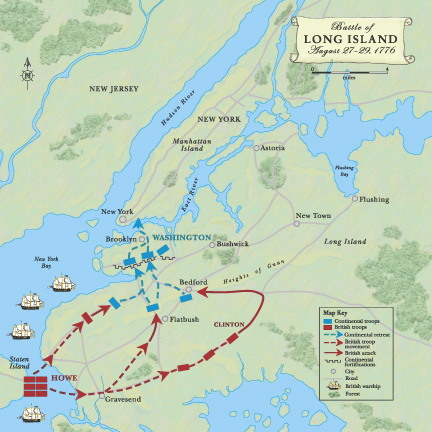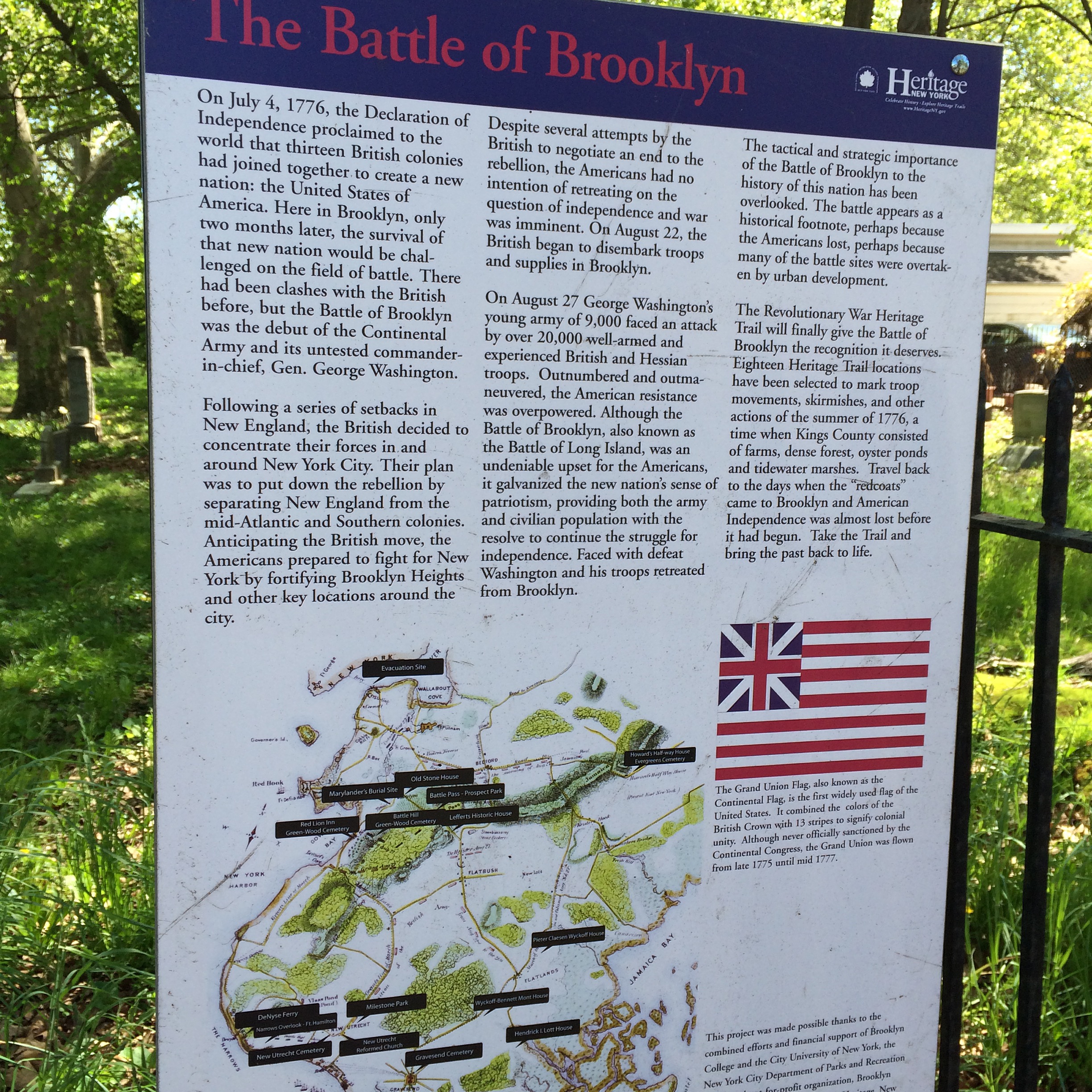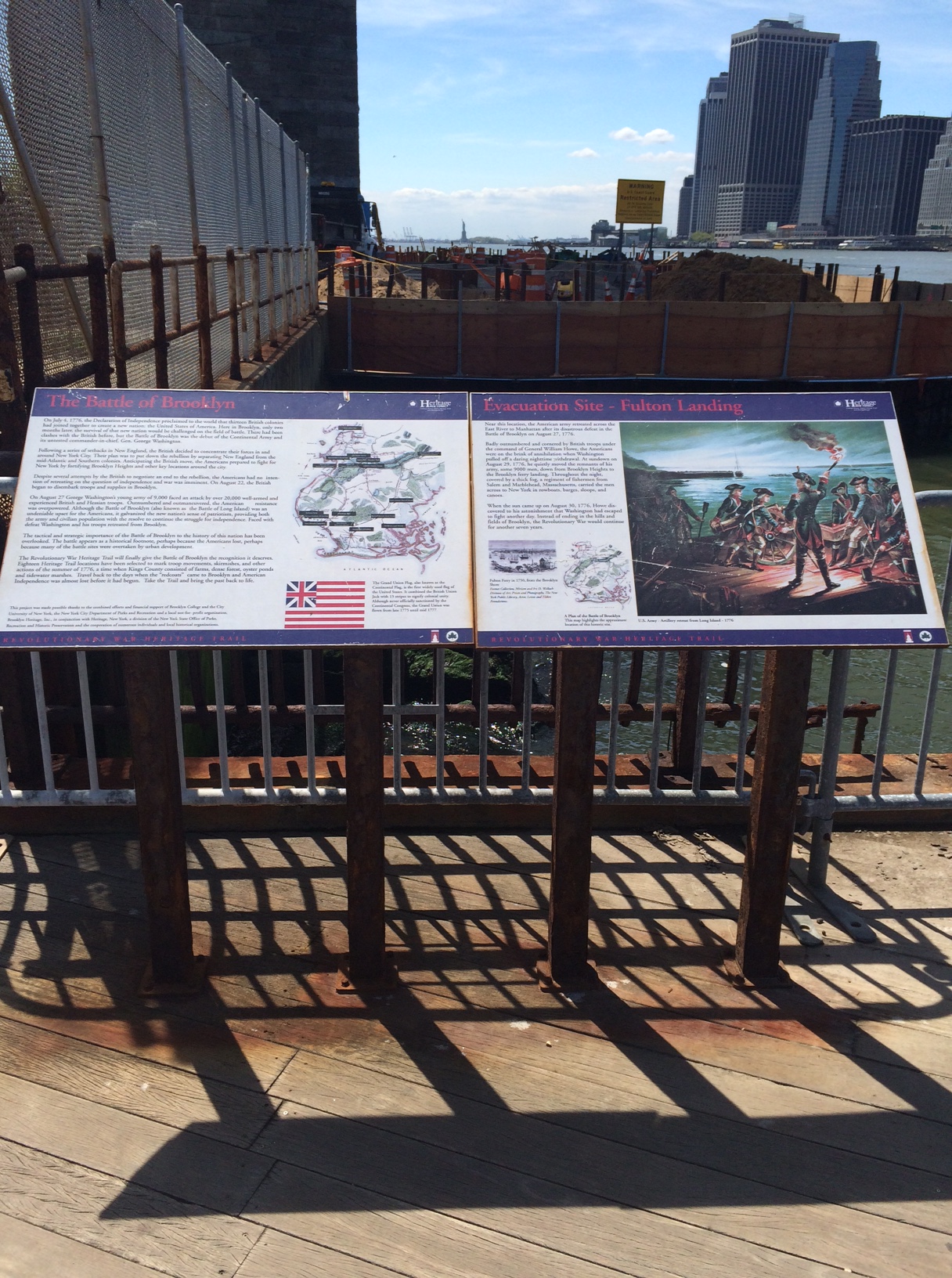Happy 4th of July!
Since I had a holiday from work yesterday, I thought I would do a little photo essay illustrating a little known fact...not just little known to Americans, but little known to the people who live here where it happened. That is, that some major battles of the American Revolution were fought in New York City. Much of that fighting took place in Brooklyn, and much of it took place in my own neighborhood!
New York tends to get lost in the shuffle. People know about Lexington and Concord, Bunker Hill, Valley Forge and Yorktown. But New York slips through the cracks and my guess as to why is because we lost that battle. The tide of the war turned for the worse here after a bunch of initial victories in Massachusetts. Washington and his troops abandoned the city and left it in the hands of the British for the next seven years. So you can see how that tale doesn't get emphasized in school (although I imagine New York City kids get it in their classwork. I hope they do! )
The Battle of Long Island was the first major battle of the war to take place after Independence was declared. It took place in late August, 1776
At any rate, I'm always encountering the monuments when I'm kicking around my neighborhood. So I thought I'd share them.
The action began in Gravesend, south Brooklyn, where the British debarked from their ships and began the march north. I photographed this marker at the Old Gravesend Cemetery, which is located behind a small factory near the F train's elevated line, about a 20 minute ride from my house.
I live in the neighborhood of Park Slope, in the middle of a rise that begins at the Brooklyn waterfront and peaks in a series of hills (the two tallest points are Mount Prospect and Battle Hill). At the bottom of my street is a VFW Hall that is built on the site of the graves of 256 fallen men from a unit that became known as the Maryland 400.
Hard to read, but this is some more text memorializing the fallen Maryland soldiers.
Up the hill a couple of blocks, on 5th Avenue (still Brooklyn, not Manhattan) is the Old Stone House, where some more of the fighting took place.
The current Old Stone House is a replica of the original Dutch farmhouse that stood there. Note the colonial air conditioners.
Up the hill some more, in Prospect Park is another monument to the fallen 400 Marylanders, at the actual battle site. I am heartened to find that though the memorial needs some restoration, there are often flowers and flags around its base left there by caring volunteers.
Elsewhere in the park, north of the Prospect Park Zoo is the site of the pass where a lot of the fighting took place, the continentals defending from the high ground, as the British tried to break through. Here is a monument at the Site of the Dongan Oak. The test reads:
"At the Battle of Long Island, on the hill to the north of this spot, the Americans had a redoubt with two guns, to guard the old Valley Grove Road, called by the early settlers the "Porte", meaning gate-way through the hills, and which ran in front of this monument. By that road stood a white-oak, mentioned in the patent of Governor Dongan, November 12, 1685, as a marker between Flatbush and Brooklyn. This tree was cut down and thrown across the road. With the dense woods on the south and swamps on the north, it made an important obstruction.
Americans, commanded by General Sullivan, valiantly defended this position against the Hessian General De Heister, until attacked from the rear by British troops, under General Clinton, then they retired in good order, bringing off their artillery."
More Battle Pass markers:
Also close by my house (about a 15 minute walk) is historic Green-Wood Cemetery where much of the fighting also took place (as the British were approaching from the south -- this fighting actually took place before the events depicted above). The land there was not yet a cemetery in 1776. Green-wood often has Revolutionary War re-enactments on the anniversary of the Battle of Brooklyn. If they do this year, we'll let you know!
The statue of Minerva on the Battle Hill Monument faces west, towards New York harbor and the Statue of Liberty, plainly visible from the site.
This plaque on the Trader Joe's on the corner of Court Street and Atlantic Ave, close to where I work, commemorates the location of the Red Lion Tavern, where Washington made his headquarters and saw the defeat go down:
Next up: I happen to work right near Ft. Greene Park, and often during my lunch break I'll go there and scale Ft. Greene Hill, another of Brooklyn's highest points. Most people don't know this, but the neighborhood of Ft. Greene was named after an actual Revolutionary War fort that was on top of this hill (with its excellent view of Manhattan), and the fort was named after Revolutionary War General Nathaniel Greene, a name I've known since childhood, since he is from my home state of Rhode Island. I am distantly related to Greene through our common ancestor John Anthony.
At the top of the hill nowadays is the Monument to the Prison Ship Martyrs. During the Revolutionary War , 11,500 American POWS died on British prison ships, 16 vessels moored in New York harbor whose only purpose was to confine American prisoners. It's not cheerful but then it's not irrelevant today either. They died for your Independence!
Lastly, if you keep going downhill towards New York harbor, through the area called DUMBO, you eventually hit this spot, roughly across from what is now South Street Seaport in Lower Manhattan. It's called Fulton Landing. It's where Washington's troops were secreted onto a bunch of fishing vessels from Salem and Marblehead, and evacuated out of the city to fight another day...for seven more long years. The spot is marked today with these signs:
Labels: American Revolution, Battle Hill, Battle of Brooklyn, Battle of Long Island, Brooklyn, Fort Greene, memorials, monuments, Park Slope, Prospect Park, Revolutionary War






0 Comments:
Post a Comment
<< Home